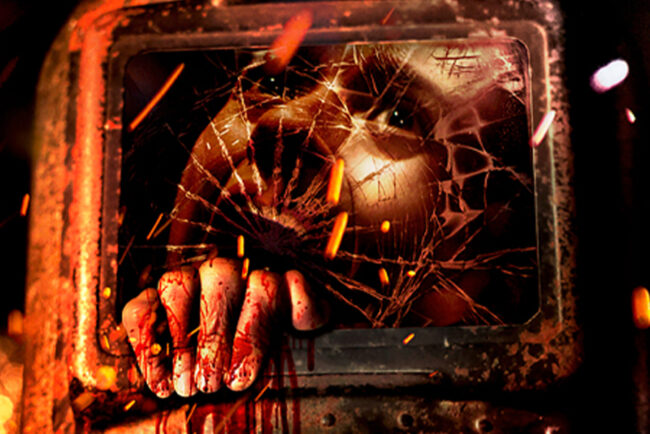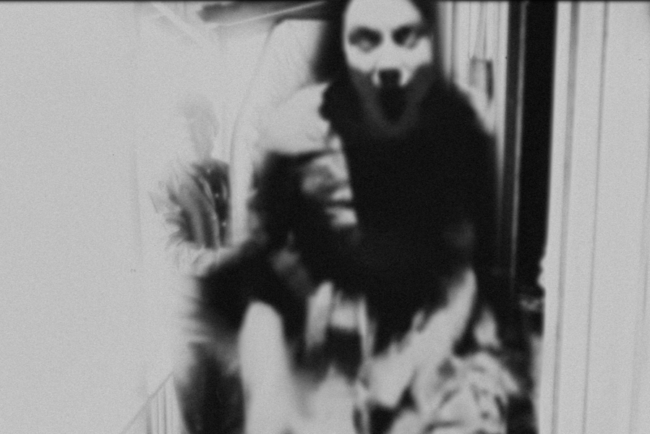
Give the Devil his due: he’s been rebooted, retconned, and reimagined for millennia, but we never get sick of him. To the ancient Hebrews, Ha-Satan (“the Accuser”) was less his own being and more a contrarian part of God’s nature. In Job, God is essentially arguing with Himself, which makes an already richly fucked-up story even more fucked up. In late pre-Christian times, the narrative of the war in heaven between God and Lucifer gained popularity among the Jews with the appearance of the Book of Enoch. Ultimately deemed apocryphal by the early Church Fathers, Enoch was nonetheless a popular story which has remained in common currency down to the present day. Islam added its own twist: Iblis, fallen angel and father of the jinn, was exiled from heaven due to his refusal to worship Allah’s newest creation–Adam. In some mystical readings, this makes the Devil the perfect monotheist, saving his worship for God alone.
We’re no exception. From the days of terrified Puritans in the dark New England woods, Americans have been obsessed with all things Satanic. The Devil has been many things to us: a tempter, a monster, a sly but honorable adversary, an answer to the persistent question of unbelievers and the faithful alike, “If God loves us, why do so many terrible things happen?” The Satanic bargain, the soul in exchange for wealth, power, or carnal pleasure, seems to have a special freight in our capitalistic society of American dreamers. And it didn’t end with Cotton Mather and Salem—just look at the 1980s, the subject of Fab Press’s Satanic Panic, a fascinating dissection of the one thing that linked Ozzy Osbourne, Dungeons & Dragons, Geraldo, and Tipper Gore: His Infernal Majesty.
Satanic Panic: Pop-Cultural Paranoia in the 1980s collects twenty essays examining the decade’s strange relationship with the diabolic. Its sensational topic notwithstanding, Satanic Panic is a fundamentally academic work of cultural critique, and its thoughtful restraint makes it all the more remarkable. The essays are all well-written, though different readers will doubtless gravitate towards different pieces. As a longtime role-player, Gavin Baddeley’s “Dicing with the Devil: The Crusade Against Gaming” was one of my favorites—an examination of the evangelical effort to ban Dungeons & Dragons by a member of the Church of Satan. While I knew much of the history in Baddeley’s piece, the author’s perspective as a student of the “real” occult set the essay apart. Likewise, Joshua Benjamin Graham’s “Masters of the Imagination: Fundamentalist Readings of the Occult in Cartoons of the ‘80s” reveals the paranoia surrounding such harmless franchises as He-Man and Teenage Mutant Ninja Turtles. Graham gives an interesting dissection of the tortured logic employed by pastors and televangelists to literally demonize children’s shows.
Other essays failed to connect with me due to the obscurity of their subject matter. Kevin L. Ferguson’s “Devil on the Line: Technology and the Satanic Film” analyzes two 1980s films, Robert Englund’s 976-EVIL and Eric Weston’s Evilspeak that examine, pre-Ringu, the connection between technology and supernatural evil. Ferguson handles the subject quite capably, but it was hard for me to sustain interest given the inconsequentiality of the movies. Likewise Alison Nastasi’s “The Unholy Passion: Sex and Gender Anxiety in Russ Martin’s Erotic Horror Paperbacks.” Nastasi’s analysis is interesting, but I couldn’t shake the feeling that we were examining the decade’s ephemera.
But the essays that interested me most dealt less with pop culture per se and more with the ambient hysteria of Satanic infiltration, beginning with Alexandra Heller-Nicholas’s riveting “The Only Word in the World is Mine: Remembering Michelle Remembers.” Written by Michelle Smith and her highly unethical psychiatrist, Lawrence Pazder, Smith claimed to have endured ridiculously terrible Satanic rituals at the hands of her family. Michelle Remembers was widely read—and widely believed—despite its patently ridiculous claims. It’s astounding and more than a little frightening that this book, filled with implausible stories of cannibalistic rituals and sacrificed babies in the suburbs, commanded such unquestioning acceptance that charges of Satanic ritual abuse were brought to trial in modern American courts.
Along similar lines, Alison Lang’s entertainingly written “‘What About These 10,000 Souls, Buster?’ Geraldo’s Devil Worship Special” examines Rivera’s lurid 1988 program, disturbingly prefiguring today’s Trumpist “post-factual” era. Leslie Hatton’s “All Hail the Acid King: The Ricky Kasso Case in Popular Culture” recounts what may be the only actual Satanic murder of the entire decade. Kasso, a teenager who murdered a friend over a drug deal gone wrong, had a brief but powerful impact on pop culture, and Hatton’s essay is a profoundly interesting one when dealing with both the murder and its aftermath.
I was born in 1982 and don’t have strong memories of the decade. For me, one of the most gripping aspects of Satanic Panic was the realization that a narrative of diabolical horror was woven around the daily trappings of my existence. The Devil may never leave us, but Fab Press has given us a top-notch examination of one of his most recent incarnations.
















